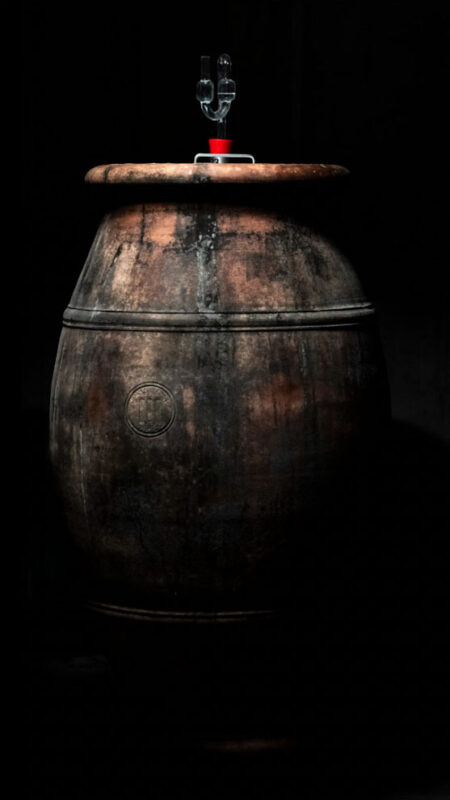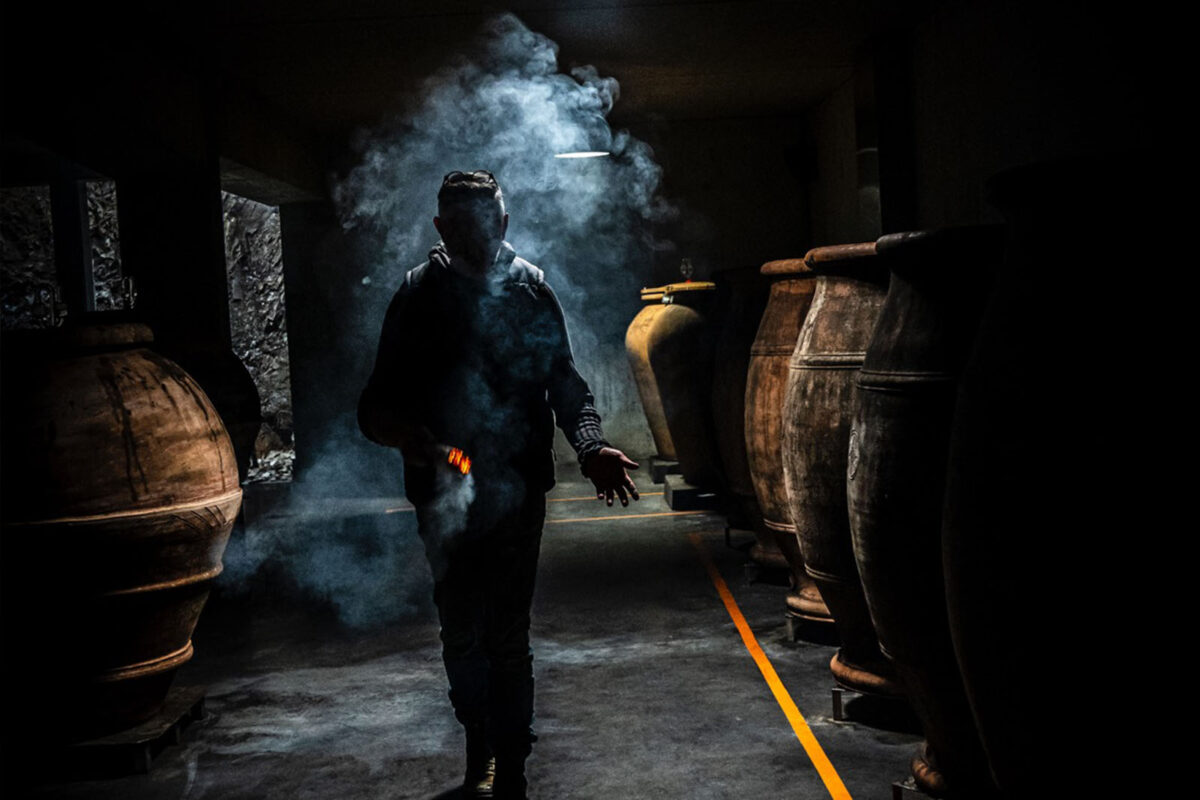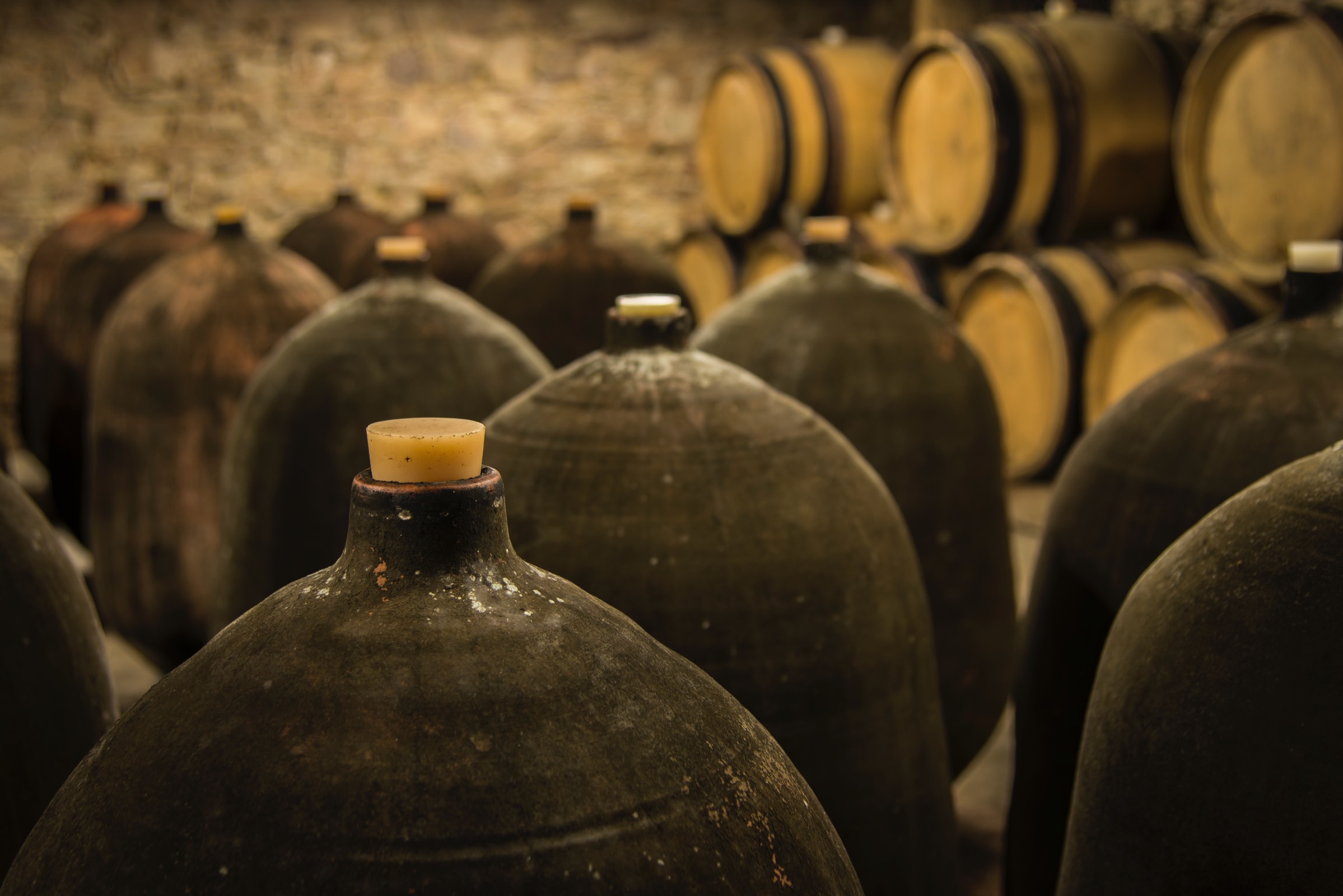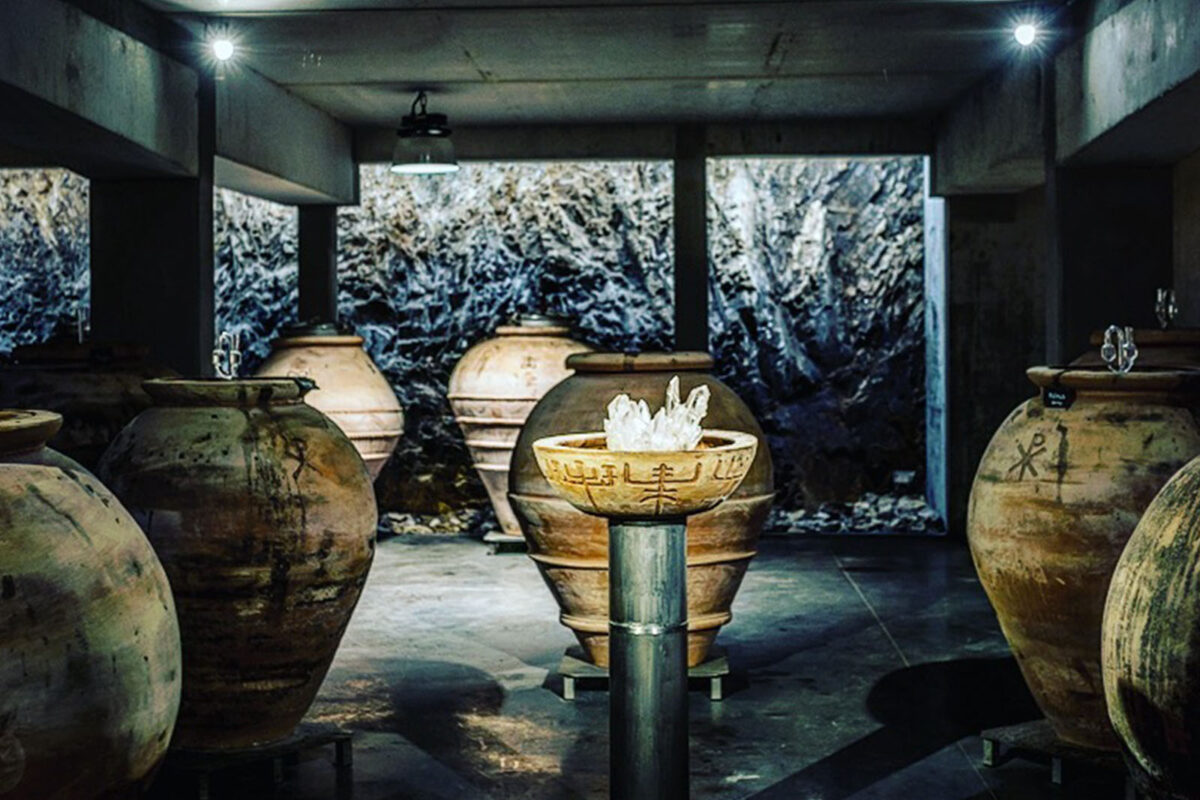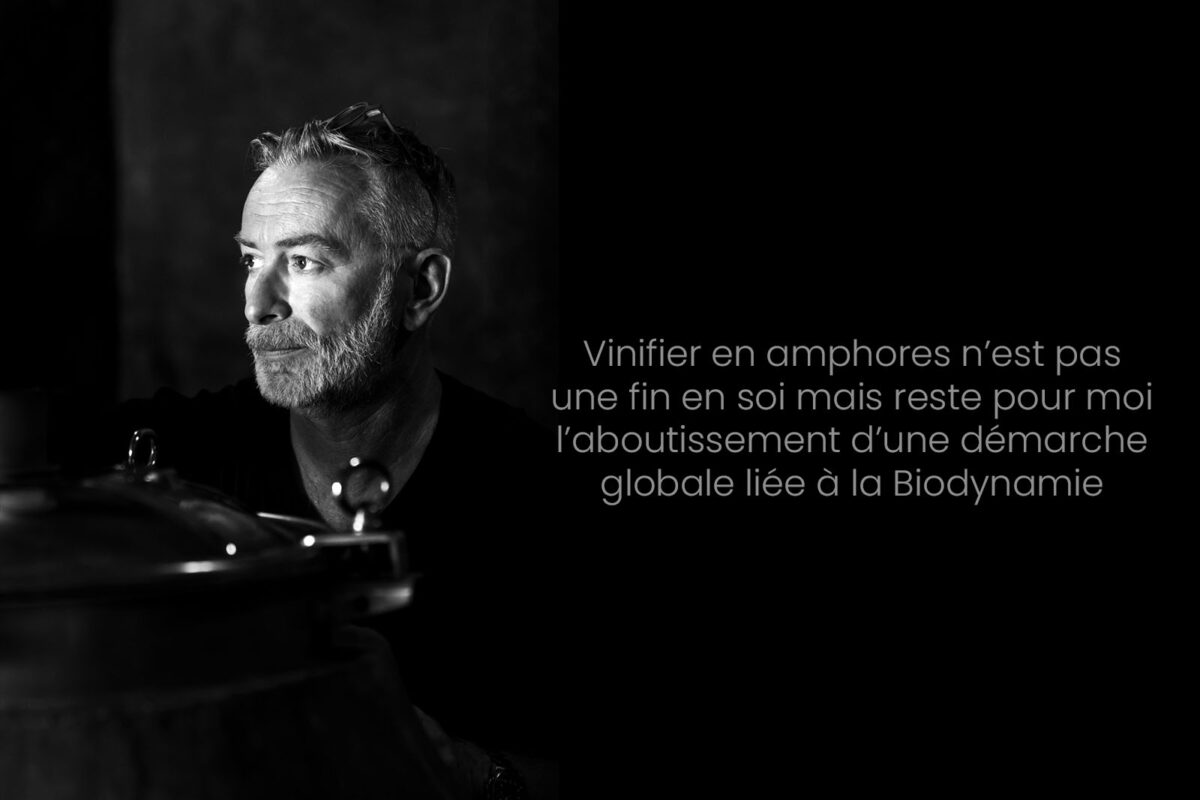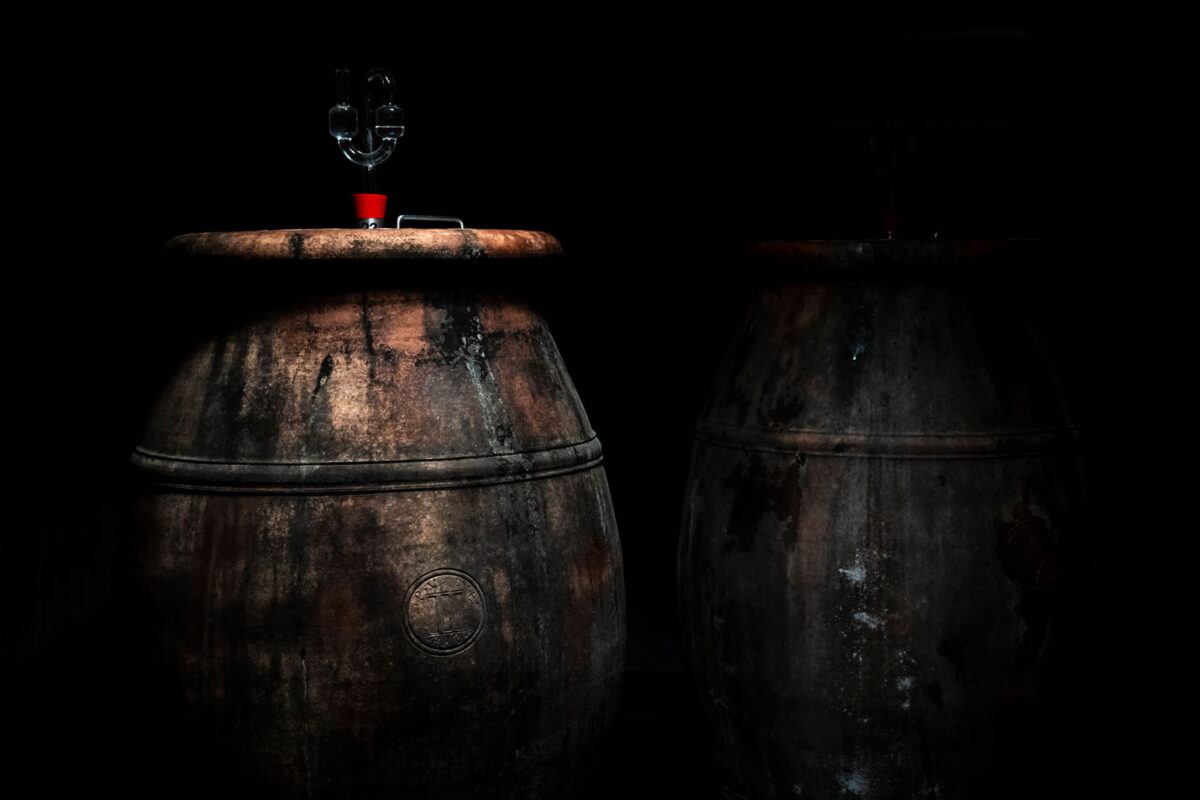Terracotta vinification
By amphora, we mean every vessel made exclusively out of clay or sandstone. The term “amphora” thus regroups terracotta winemaking vessels of all shapes, sizes, and origins referred to as “Dolias,” “Tinajas,” “Qvevris,” or sometimes simply “Jarres.”
Winemaking using amphora harkens back to traditions of antiquity; over time (centuries), this form of vinification was gradually abandoned and replaced by cheaper and less restrictive ways of winemaking, notably using wooden barrels and stainless-steel tanks.
Not more than 30 years ago, only a precious few winemakers in Northern Italy, Sicily, Spain, Croatia, Slovenia, and Georgia continued to make wine using traditional techniques and maturation in terracotta jars.
Gravner, Cos, Vodopivec, Foradori… These names are iconic in the ears of wine aficionados familiar with wines made in amphorae. Meeting these exceptional winemakers and their wines compelled us to pursue making wines this way ourselves. We would be remiss if we didn’t also mention our friend and mentor Philippe Viret from the Southern Rhone. Alone on his quest, he discovered amphora at the begining of the 80’s and was taken for a madman, lunatic, a dreamer…
It is in large part thanks to him, his invaluable help, and his wise advice that we finally embarked on a journey of our own.
The Domaine today uses more than 100 amphoras to make our wines… suffice it to say that this way of winemaking is a choice, a passion of ours, and far from just a popular fad.…
160L, 300L, 350L, 450L, 500L, 650L, 750L, 800L, 850L, 1000L, 1300L & 1500L… The shapes, sizes, and provenance of our amphoras are as diverse as the wines that they contain. They come largely from the South of France and Northern Italy, and are fabricated individually by hand, no single amphora being the same as the rest.
Making wine using amphoras requires time, lots of hard work, attention, and many delicate movements, but has many advantages as well. The natural origin of the clay and the neutrality of the terracotta respects the purity of the fruit and the expression of terroir in the wines. The natural thermoregulation and constant circulation of the lees within contribute to the complexity and depth of the wine as well.
Making wine using amphorae is not an end in and of itself, but rather the culmination of a global approach linked to Biodynamics and Cosmoculture, making possible our production of natural wines without external oenological entrants and limited SO2 usage.
